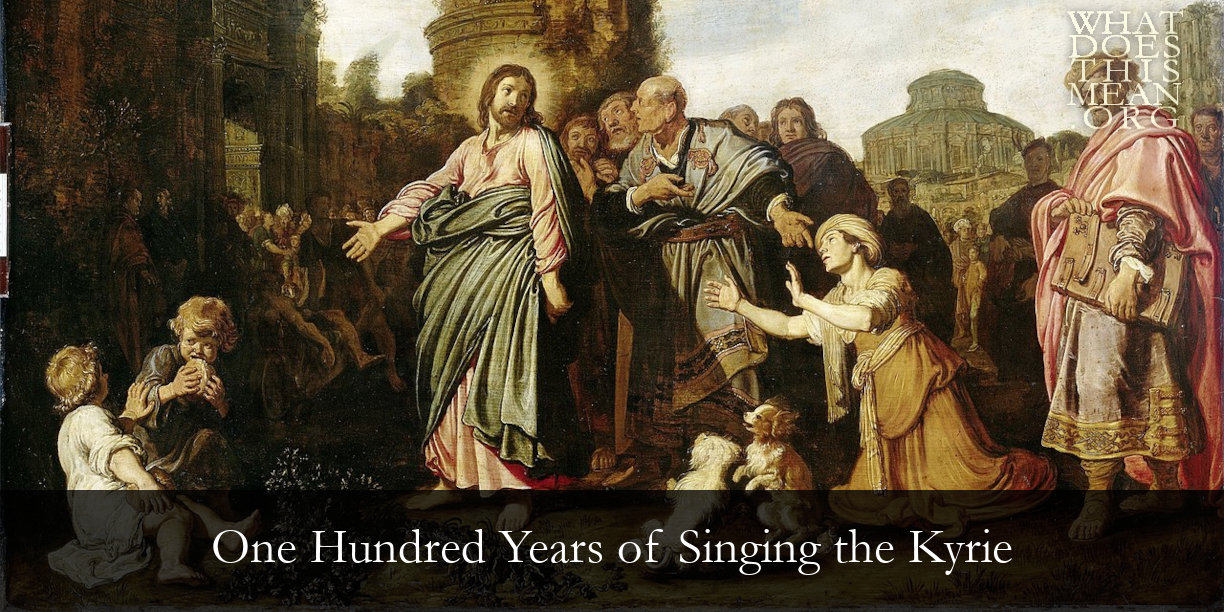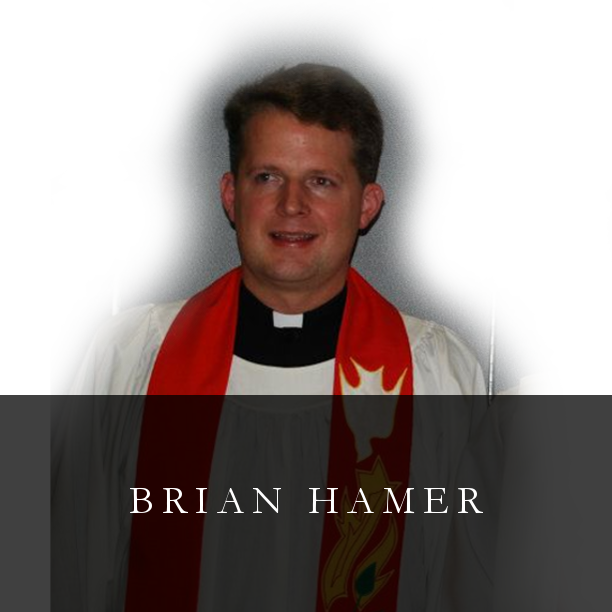Building on these narratives, Peter Bender describes the theology of praying, “Lord, have mercy; Christ, have mercy; Lord, have mercy”:
The Kyrie is the first of the five great pillars of the Divine Service. It teaches us what true Christian worship really is. It is based on all the prayers for mercy in the Scriptures. It is the prayer of all Christians who believe in Jesus Christ and trust in Him for all that they need: the forgiveness of sins, life, salvation, and all the needs of this body and life. (Lutheran Catechesis [second edition], p. 71)
It was perhaps with this understanding of the Kyrie in mind that Frank Martin, the Swiss composer, teacher, harpsichordist, and pianist, began writing his Mass one hundred years ago. The work was not finished until 1926 and was neither published nor performed until 1963. Why did Maritn leave this work in his desk drawer for nearly forty years? Martin said, “I considered it as being a matter between God and myself. I felt then that an expression of religious feelings should remain secret and removed from public opinion” (Bach Collegium San Diego [program notes], February 2019). Another possible explanation is that Martin was intimidated by the music of J. S. Bach, having had his own “eureka” experience in hearing Bach’s St. Matthew Passion at age twelve. Who, after all, is worthy to place his own works alongside the masterworks of J. S. Bach?
One hundred years later, those who rejoice that Martin did not keep his work concealed from the public continue to explore its rich and varied musical treasures. Ruben Valenzuela, conductor of the Bach Collegium San Diego, summarizes the unique compositional features of Martin’s Mass: “[The work] seems to at once look back to an older aesthetic, but also forward to its ability to coalesce a variety of vocal styles with an indebtedness to a chant aesthetic . . . a Renaissance motet lost in time, aware nonetheless of long centuries passing, and new horrors unfolding” (Program Notes, February 2019).
Particularly instructive is Valenzuela’s phrase “a Renaissance motet lost in time.” In other words, there is an element of chant, as is evident in the opening bars of the Kyrie, and throughout the work. In the style of the Renaissance motet, the music changes with each phrase of the text: Kyrie (Father), Christe (Son), and Kyrie (Lord). But one quickly encounters compositional techniques of the twentieth century, such as unresolved dissonances and unconventional voice leading. In the following recording of the Kyrie, listen for a change in style at 2:14 and consider its theological significance.
| Kyrie eleison Christe eleison Kyrie eleison | Lord, have mercy; Christ, have mercy; Lord, have mercy. |
While Martin was working diligently on his Mass, the following notice appeared in the 1923 New Year’s Day issue of London’s The Musical Times: “Dr. Ralph Vaughan Williams’s Mass in G minor for solo quartet and double choir a cappella was sung here last night by the City of Birmingham Choir under Mr. Joseph Lewis” (The Musical Times 64:959, p. 36). Ralph Vaughan Williams (hereinafter RVW) was a true composer for England, having contributed to the repertoire for every major musical venue: symphonies for the concert hall, operas for the opera house, chamber music for smaller venues, and, contrary to the myth promulgated in Friedrich Blume’s 1975 work, Protestant Church Music, a substantial output of sacred works for the church. (His church music includes several hymn tunes, which we will cover in a future column to recognize his 150th birthday.)
Like Martin’s masterpiece, RVW’s Mass in G minor is scored for double choir, unaccompanied, although re-pitching between movements is not uncommon in either work. RVW’s setting differs from Martin’s in adding four soloists, creating not only contrasts between choirs of equal size, but also allowing for thinner textures to be set in contrast to tutti sections. Finally, similar to Martin’s setting, the listener can expect something old and new, “not merely an imitation or rejuvenation of an old style but an amalgamation of certain old principles with other, new concepts” (William Kimmel, The Musical Quarterly 27:4, p. 493).
Now enjoy what one scholar called one of “the finest Mass settings of the century” (Nick Strimple, Choral Music in the Twentieth Century, p. 78). What do you think is the most endearing trait of RVW’s setting of the Kyrie?
Consider, for a moment, how the Kyrie takes on a special significance during Lent as the liturgy moves directly from the Kyrie to the Collect. This may seem abrupt at first, but one gradually grows accustomed to this omission, especially if the liturgist is deliberate enough to pause after the Kyrie. The significance of the omission is profound: Sinners cannot come barging into the glory of God’s presence. Rather, they must join with the Canaanite woman, the blind man, and the ten lepers to pray for God’s mercy in Christ alone. These musical settings of the Kyrie, written between the two global wars of the troubled twentieth century, depict the Kyrie in profound musical terms as a plea for Divine clemency for all who pray, “Lord, have mercy; Christ, have mercy; Lord, have mercy.”
Extra Choral Credit: Hearing the Entire Mass by Frank Martin
Sung by The Westminster Choir
Joe Miller, Conductor



 RSS Feed
RSS Feed
